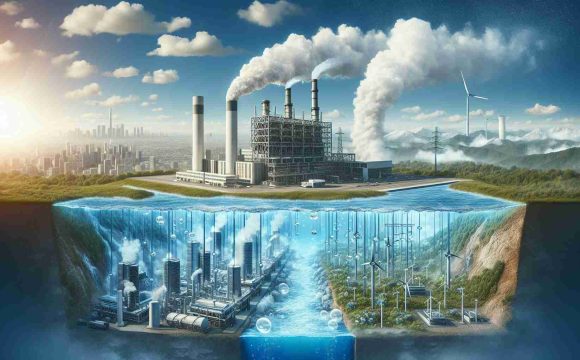The European Union has made significant advancements toward a clean energy future, yet crucial challenges remain. As critical deadlines for decarbonisation loom, the focus needs to pivot sharply to energy storage solutions.
Currently, renewable energy contributes to an impressive 44.7% of the EU’s electricity generation, marking a substantial shift from fossil fuel dependence. With fossil fuel generation declining by 19.7% in just one year, there’s a clear push towards sustainability. However, to truly harness the potential of renewables, the EU must confront the pressing need for enhanced energy storage capabilities.
Energy storage is essential for managing the variability of renewable sources, allowing surplus energy from sunny or windy days to be utilized during less favorable conditions. It offers multiple benefits, including cost reduction for consumers, improved grid stability, and a decrease in the reliance on fossil fuels.
The European Commission emphasizes that a robust Energy Storage Action Plan is necessary to overcome current barriers and ensure strategic deployment. This includes creating harmonized regulations across member states, introducing market incentives, and prioritizing storage solutions in national energy strategies.
The message is clear: procrastination would mean higher energy costs and a setback in securing Europe’s energy independence. The call for immediate action is not just about sustainable energy—it’s about solidifying Europe’s leadership in global clean tech and ensuring a resilient, competitive energy landscape for the future.
Unlocking the Future: The EU’s Urgent Push for Energy Storage Solutions
The Current Landscape of Renewable Energy in the EU
The European Union (EU) has achieved remarkable milestones in renewable energy, with renewables contributing to approximately 44.7% of its electricity generation. This is a noteworthy departure from an era heavily reliant on fossil fuels, which saw a 19.7% decrease in generation in the past year alone. This transition reflects the EU’s commitment to sustainability, but it also underscores a critical challenge that must be addressed: the need for enhanced energy storage capabilities.
Importance of Energy Storage
As the reliance on renewable energy sources such as wind and solar grows, the need for effective energy storage becomes increasingly vital. Energy storage systems help manage the unpredictable nature of renewable power generation by allowing excess energy production to be stored and then utilized when generation dips—such as during cloudy days or calm periods. This approach not only optimizes renewable energy use but also leads to:
– Cost Reductions: By balancing supply and demand, energy storage can lower electricity costs for consumers.
– Grid Stability: Enhanced storage solutions can prevent grid overloads and blackouts, ensuring a reliable power supply.
– Reduced Fossil Fuel Dependence: Efficient storage systems enable a more extensive integration of renewables, minimizing reliance on fossil fuels.
Strategic Initiatives for Energy Storage
The European Commission has highlighted the urgency of a comprehensive Energy Storage Action Plan to overcome existing barriers. This plan involves several strategic initiatives, including:
– Harmonized Regulations: Establishing consistent policies across EU member states to facilitate the development and implementation of storage solutions.
– Market Incentives: Introducing financial incentives to stimulate private investment in energy storage technologies.
– Integration into National Energy Strategies: Encouraging countries to prioritize energy storage in their respective energy frameworks.
Pros and Cons of Energy Storage
Pros:
– Increased Renewable Utilization: Maximizes the use of clean energy resources.
– Lower Energy Bills: Saves consumers money through demand management.
– Enhanced Reliability: Improves the resilience of the power grid.
Cons:
– High Initial Costs: Investment in energy storage infrastructure can be substantial.
– Technological Limitations: Not all storage technologies are equally efficient or sustainable.
– Long Payback Periods: Returns on investment may take years, which could deter investment.
Future Trends and Insights
The trajectory of energy storage in the EU is characterized by several emerging trends:
– Innovative Technologies: Advancements in battery technology, particularly lithium-ion and solid-state batteries, promise to enhance storage efficiency and lifespan.
– Sustainability Focus: Increased emphasis on environmentally-friendly materials and recycling methods in energy storage systems.
– Energy Communities: Growth of localized energy systems where communities utilize shared storage solutions, promoting resilience and energy independence.
Market Analysis and Predictions
As the EU continues its transition toward a greener energy landscape, analysts predict a robust growth trajectory for energy storage markets. By 2030, the energy storage sector in Europe is expected to reach a market size of €xx billion, driven by policy support and technological advancements. However, timely action is essential; delays could lead to higher energy prices and jeopardize the EU’s energy independence.
Conclusion
The EU’s path toward a sustainable energy future intertwines with the urgency to enhance energy storage solutions. As national governments and the EU itself prioritize this challenge, the stakes are high—not just for environmental sustainability, but for economic stability and energy security. Procrastination in these strategic actions could hinder Europe’s standing in the global clean tech arena, underscoring the need for immediate and coordinated efforts.
For more information on the EU’s energy policies, visit europa.eu.







